Among the illustrious names that appear in the eternal discussion to nominate the best player in history is, by his own right, the Australian Rod Laver, “The Rocket”, the man who rode on the backs of three different eras of tennis, amateur, professional and open, triumphing in all them in an undeniable way.
In Rod Laver is given a curious paradox. On the one hand, he is a celebrity, recognized by the tennis and the whole world of sport; his presence at major events is common, and the tributes to his figure are continuous. However, many of his achievements are unknown to the vast majority of fans; outside the scope of the great specialists, what has been left in the Laver career are his 11 “majors” and the Grand Slam obtained in the years 1962 and 1969.
The reasons for this large dark area that appear in the career of Laver are two: on one hand, the perpetual oblivion to which professional tennis has been doomed since the 1930s until the advent of the Open Era. On the other hand, the scarcity of images and the absence of a systematized record in the tennis activity prior to 1968 – both the databases of the ATP and the ITF have no information of the pre-open era, with the exception of the Grand Slam tournaments – that has left fans without references.
But the Laver career is so rich and extensive, that it cannot be summarized in 77 matches he needed to win his Grand Slam titles. Suffice it to say that during 23 years of career, those which go from 1956 to 1978, he played 1832 individual matches, without counting minor titles or exhibitions, winning 1430, of which 390 were against top-10 of his time. (Links requires free, easy and safe register) Laver career match record
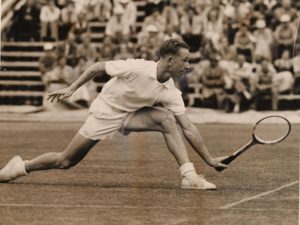
Rodney George Laver was born August 9, 1938 – the year of Donald Budge Grand Slam -, in Rockhampton, Queensland, Australia, into a middle class family, where he was the third of four brothers. According to himself in his memoirs, although her parents did not enjoy good health, they were always fully committed to him and his brothers. His father – cattleman and butcher – always worried about their children will practice sport; of course, in an Australia where the names of Bromwich, Crawford, Quist, Patterson and Sedgman had mythic resonances and where the influence of Harry Hopman was increasing, the chosen discipline could not be other than tennis.
Laver, left-handed, 1.73 meters and a small physical size, did not seem predestined to be a great figure of the sport. But the sharp clinic eye of Charles Hollis, a charismatic coach who mentored a large part of the Australian tennis golden generation and a key figure in the history of Laver, was not fooled by appearances and he could see an incomparable talent in the young of Rockhampton and, above all, a will of steel.
Hollis forged the tennis of Laver with hard workouts based on his military experience – explain, demonstrate, practice and correct – looking for a total game, beyond the tennis of service and volley which prevailed at that time. Thus, Laver developed a technique without weaknesses, where the volley game was accompanied by aggressive groundstrokes, standing out his topspin backhand, an innovation in those days, which he was able to hit them running almost with the same precision than standing. His left-handed service became a lethal weapon, fitted with a wide variety that allowed him either slice it to play wide and displacing out the court the opponent, as direct it to the cross, straight or topspin, with devastating effects. In the service, Laver hit the ball very high, to compensate for his short stature, projecting with legs up and forward, in an exquisite technique which required equal strength and coordination. With all of this, Laver formed a very advanced tennis to the standard of his time.
In the physical aspect, the requirement of Hollis and the hard work of Laver gave excellent results. Rod gained so much strength in his left forearm that was hard to believe that it corresponded to the same person as the right one; such was the volume he got. His speed and agility were developed so much that the nickname of “The Rocket” – with which Hopman called him ironically in 1951 to mock because of his slowness – acquired an authentic reason for being.
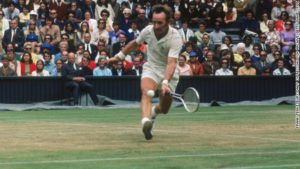
Laver, urged by Hollis, came to the fore in 1956, with only 17 years old. In the 7 seasons in which he competed in amateur tennis the career of the Rockhampton young was marked by a continuous progression, culminating in 1962, a year for which any qualifier is too small, with the achievement of the Grand Slam – the second and to date last player to achieve it after Don Budge – and 18 other tournaments, with a balance of 150 victories – absolute record of victories in a season – and 16 defeats. Most wins in a single season Laver 1962 activity
In his amateur stage Laver won 46 tournaments, 38 of them between 1961 and 1962, achieving, plus twice Wimbledon and the Championship of Australia, a Roland Garros and the U.S. Championship, all the important titles of the calendar of the period, among other Queen’s, Hamburg, Sydney, Melbourne, River Oaks in Houston, Newport, the Italan Internationals, Lugano, Adelaide, Caracas, the British Hardcourt Championship and the Davis Cup in 1959, 1960, 1961 and 1962. His amateur balance was 466 victories and 111 defeats, for a 80,76% effective.
Accomplished all amateur objectives, it was the time to capitalize on fame and talent with the jump to pro – Hopman despaired – where Ken Rosewall, Pancho Gonzales and Lew Hoad, the best players in the world, are waiting for him. “The Rocket” could certify first-hand the huge difference that separated the amateur with the professional field: his 21 first matches were 19 defeats, Hoad, Rosewall and Mackay beat him with results of 6-0, 11-2 and 2-0 respectively.Laver 1963 activity
It could have been a shock for a player who came from winning everything in the amateur field. But not for Laver who already had demonstrated heart of champion beating previous adverse situations, as his hard beginnings in 1956 or when he lost four points in the Davis of 1959, he never lost again a match in this competition.
Laver understood that what had happened was even logical. Trabert, Rosewall, Hoad and Cooper had gone through similar situations when they were swept away by Pancho Gonzales after razing in the amateur field. So he set out to learn and adapt his game. He put aside the happy game and carefree which he had exhibited in 1962 and he began to limit the risks and play more to the percentage.
The results were swift and Laver soon began to compete against professionals. In that same year he already was second in the professional World Series, although clearly beaten in the play-off final by Rosewall, who in the absence of Gonzales, he clearly dominated the season.
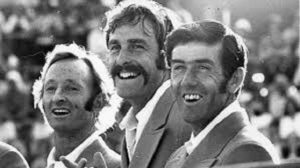
As happened in his amateur stage, the Laver path in professional tennis was always in constant rise to completely dominate the circuit. In 1964 he triumphed in the US Pro and Wembley, his first two professionals majors. In 1965, he already was the undisputed number one in the world, won 17 trophies, including Wembley, his third Grand Slam Pro, Newport and the Masters Pro in Los Angeles. In 1966 were 15 titles that he pocketed, US Pro, Wembley for the third consecutive year and Forest Hills included.
But the best year of the Australian in the professional field had to wait until 1967, when he crowned with the Grand Slam winning in the three major, US Pro, Wembley and French Pro, emulating Rosewall who had achieved it in 1963. But Laver, also won the first and only tournament of Wimbledon for professionals, a historic tournament which many authors consider even more important than the Grand Slam Pro. To round off a nearly perfect season, Laver won other 15 tournaments, including Madison Square Garden, the World Pro Championship and the very tough of Newport and Masters Pro. A historical performance of Laver that in thetennisbase we consider fifth in the most successful seasons ranking. Laver 1967 activity
In 1968 the exodus of top players to the professional field was already massive. So the federations had no choice but to give in and admit, not without hesitation and protests, the participation of the “pross”. Thus began the open era tennis in which all players could finally compete in the same tournaments, something that had not happened since Bill Tilden moved into professional in 1931. 37 years later the tennis was reunified.
The new tennis stage took Laver with 30 years, but that did not mean an obstacle to him in order to still remain the great dominator. Although he lost the final of Roland Garros before Rosewall, he came back to Wimbledon, six years later, to achieve his third consecutive title in an exhibition in which only Dennis Ralston, in the quarterfinals, got him in trouble.
Despite the new openness character of the competition, the “pross” continued playing even their own circuit. Laver could raise his fourth US Pro and his second French Pro, beating on both final to John Newcombe. There were his ninth and 10th Grand Slam Pro, but with the advent of the Open Era this category disappeared for the history of tennis, although the tournaments kept all its strength.
Finally, Laver ended the year 1968 with 12 titles and a balance of 69 victories and 19 defeats. Unfortunately, the ATP only recognizes the titles of Wimbledon and Los Angeles and 38 matches played, as if the epic battles he had with John Newcombe, Roy Emerson, Andrés Gimeno, Pancho Gonzales and Ken Rosewall had not existed. Laver 1968 activity
1969 was the year of his second Grand Slam. The third of the history, but the only retrieved without restrictions on the participation of players; in 1938 Budge did not have to confront Tilden, Vines and Perry, who already played in professionalism. A colossal feat that, 47 years later, has not been repeated yet. Finals before Gimeno, Rosewall, Newcombe and Roche – in which he only lost a set against Newcombe and another with Roche – to wrap up, surely, the most brilliant career in history. Laver 1969 activity
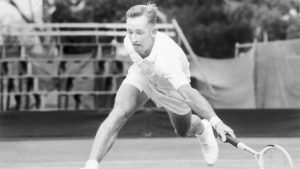
Although he did not win a Grand Slam tournament again – in the ten following years he only took part in eight editions – the achievements of Laver did not cease. He maintained the global leadership during 1970 and 1971, years in which he won twice the Tennis Champions Classic, triumphs that, according to the memoirs of the own Laver, were among the most important of his career – in the 1971 edition he won in 13 matches to the best players in the world to reach the title – even though the ATP, as happens with so many other tournaments in those years, does not have them recognized.
In 1973 he returned, 11 years later, to the Davis Cup to perform another brilliant demonstration. He defeated in singles to Jiri Hrebec, Jan Kodes, Stan Smith and Tom Gorman – to the latter in a dramatic match of five sets – to give Australia its twenty third Davis Cup, the fifth in his particular track record.
The last official match of Laver was in Las Vegas, in April 1979. The honour to dismiss him from the courts corresponded to John Alexander. A legendary champion was gone, but also a great man characterized by an indomitable spirit of self-improvement and a sincere modesty that made him to write in his memoirs that the best match of his life was the defeat against Rosewall in the French Pro of 1963.
Below we leave here a summary of the accomplishments and records of Rod Laver during his career:
-189 titles won – 200 if minor tournaments are included – absolute record in the history of tennis. Most titles all time
-1430 victories, second mark of all-time after Ken Rosewall, 1611. Most wins all time
– 390 victories against top-10 players, fourth historical record after Gonzales (619), Rosewall (544) and Segura (414). Most wins vs. top-10 all time
-11 Grand Slam titles (4 Wimbledon, 3 Australian open, 2 US Open and two Roland Garros).
-8 titles of Grand Slam Professional (4 Wembley, 3 US Pro and 1 French Pro), third player with more titles after Ken Rosewall (15) and Pancho Gonzales (13).
– Number one in the world during 8 seasons, according to the ranking of thetennisbase: 1962, 1965, 1966, 1967, 1968, 1969, 1970 and 1971. Only Bill Tilden ended up more times number one at the end of season, 13. Most #1 end of season
– 402 weeks number one in the world, also behind Tilden who maintained the world leadership during 645 weeks. Most weeks #1
-287 consecutive weeks as number one in the world, absolute record, from 26-09-1966 to 26-03-1972. Most consecutive weeks #1
-Three seasons between the ten most successful in history: 1962, 8th, 1967, fifth and 1969, fourth, just behind Pancho Gonzales (1956), Roger Federer (2006), and Novak Djokovic in 2015, which according to the thetennisbase ranking, is the best season in history. Best seasons all time
– Head to Head favourable with all the great players of his time: with Rosewall, the duel with more matches in the history of tennis, 73-59, despite multiple defeats suffered in 1963. 34-17 with Gonzales, the player he most admired. 30-15 against the talented Hoad. 49-18 before Emerson, 68-33 Gimeno, 61-16 Buchholz, 40-9 Stolle, 27-7 Ralston, 26-6 Ayala, 26-4 Olmedo, 21-3 Okker, 12-9 Roche, 18-2 Sedgman, 17-3 Ashe, 15-4 Newcombe… Laver was able to win all the players of the golden age of tennis, an extraordinary performance. The only players he has negative balance, having played at least five matches, are Ilie Nastase (2-5), Björn Borg (2-5), Eddie Dibbs (2-3). Borg is 18 years younger than Laver and Dibbs 13. Nastase, 8 years younger, is the only player of that generation who could beat Laver. Laver rivalries
– Grand Slam amateur (1962), professional (1967) and “open” (1969).
– Player with the most successful career of all time according to thetennisbase.com. All time ranking
One Comment
Leave a Reply
You must be logged in to post a comment.
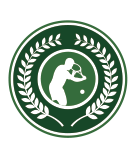
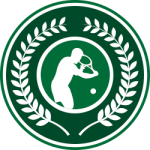
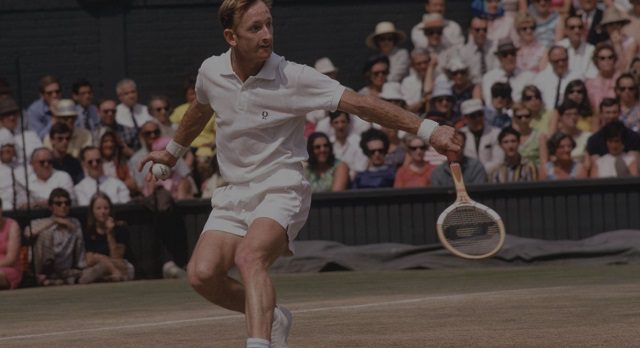
Awesome tribute to the greatest player of all time.
Thank-you so much for all those facts and figures.